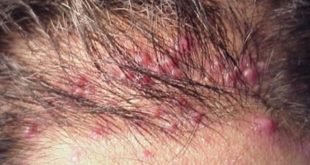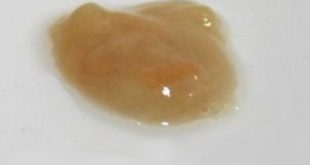Itchy eyebrows may be a sign of psoriasis, eyelid and eyebrow mites, shingles and even dandruff. In most cases, the itching is accompanied by a flaky skin and eyebrow hair loss. If you do not moisturize your eyebrows, you are likely to experience a little itchiness between eyebrows. Here’s the superstition meaning and treatment for itchiness.
What does itchy eyebrows mean? Superstition?
Contents
Having itchy eyebrows normally isn’t a reason for concern. It can however be a temporary irritation that will disappear on its own. If you notice the eyebrows are frequently itchy or even if the itch doesn’t disappear, it’s a perfect idea to start tracking the symptoms. Keeping notes about when the eyebrows itch may assist you the figure out the cause.
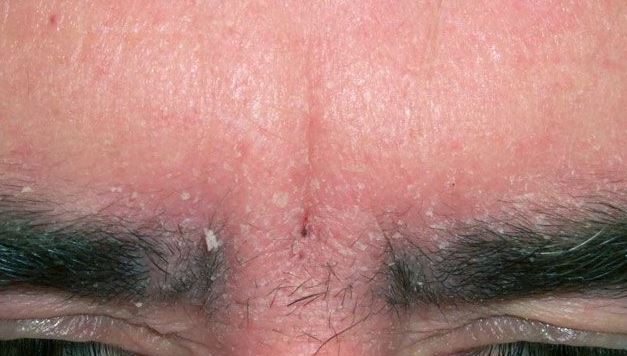
Most of the conditions that cause itchy eyebrows aren’t too dangerous and shouldn’t change the vision when they are well controlled. Some of the conditions are easy to treat at home. Others need a visit to the doctor’s office or an ongoing treatment.
Whatever the case is, don’t ignore the itchy eyebrows if they’re interfering with the quality of life. Relief may be easy to find.
Before you call the doctor, ask yourself if you have experienced any other symptoms that accompany the itchy eyebrows. Consider if you’ve noticed:
- flaking skin
- redness
- burning
- pain
- similar symptoms on any other part of your body
It’s also vital to note if you have a history of skin conditions that lead to itching or even irritation on other parts of the body. The itchy eyebrows cannot be related, but some of the conditions might flare up on different parts of the body.
What causes itchy eyebrows?
1. Eczema eyebrows
Eczema is a common skin disorder that has an inflammatory and also itching component no matter which of the several types one is having. It is a condition normally found in children and the cause is not clear.
Eczema first appears as an episode of itching and also the redness of the skin. You also may have the tiny bumps or blisters. When eczema develops into a long-term condition, it is called chronic eczema. This leads to:
- Thickening of the skin
- Itchy eyebrows
- Scaling
- Flaking
- Color changes
There are several types of eczema. The type depends largely on the cause, shape as well as the location of the rash.
Most eczemas are related to allergies or to contact with irritating substances. Some are associated with fluid retention in the legs.
2. Eyebrow psoriasis
If you have experienced the psoriasis of the face, it can also affect the eyebrows along with the forehead, and the skin that is between the nose and the upper lip. Together with the itching, you can notice the following on other parts of the body:
- scales
- patches of irritation
This condition is normally chronic and may n ongoing treatment, but it isn’t contagious.
3. Eyebrow dandruff and flaky eyebrows
Seborrheic dermatitis- This condition is much closely related to the dandruff. It normally affects the scalp, but it might also lead to itchy, flaky eyebrows or even the skin issues in the oily areas. Seborrheic dermatitis can lead to the skin to be slightly red.
The specific cause of the skin issues isn’t entirely understood. It can be due to the yeast, an inflammatory response, or even a change in the seasons. The condition normally tends to be worse during the winter and also early spring. It commonly requires to be managed using repeated treatments. This condition isn’t very contagious.
4. Itchy eyebrows due to diabetes
Poorly controlled type 1 and type 2 diabetes might create skin issues and also itchiness on different parts of the body, including the eyebrows. This is normally due to consistently elevated blood sugars can depress the immune system. Because of this bacterial skin infections can develop.

5. Itching eyebrows after waxing
Beauty treatments like waxing, plucking, and also threading may irritate the delicate skin around the eyebrows. Normally, the bumps and the itching are very mild and disappear in a few days. If symptoms persist, then you may have a superficial skin infection. The doctor can assist to determine if the eyebrow area is much infected, along with the best course of treatment. In some other cases, a mild infection in the area might be safely treated using over-the-counter products.
Itchy eyebrows after waxing is a very normal phenomenon. Most of the women who wax the eyebrows will have this condition at a point of time in their lives. It is a well-known fact that pulling the hair on a regular basis affects its growth and eventually the hair stops to grow.
When you wax the hair on a routine basis, then you damage the hair follicles, which may become weaker after every waxing session. As a result then you will notice that you have to wax the brows less frequently. If you used to wax the eyebrows every 5 weeks, then you may now require to do them only once in a couple of months.
Along with itching, you can also notice the thinning of eyebrows using regular waxing. Patches of eyebrow might become hairless while other areas indicate very sparse hair. This condition may be improved if you stop waxing the hair for some period of time and then resort to other methods of shaping the brows like trimming eyebrows or even plucking eyebrows. Most likely the eyebrow hair will grow back. Besides, the itching can also soon subside.
6. Eyelid mites
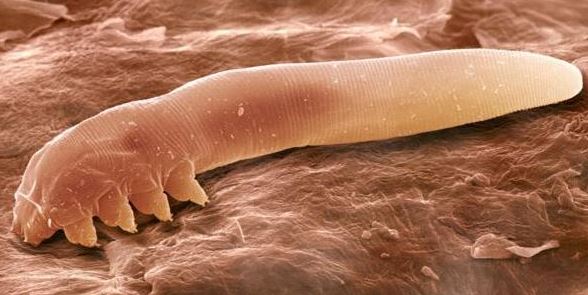
Although it’s not very common in the United States, parasites like the mites and lice may live in the eyebrow area and lead to itching. Lice, for instance, might live on the body as eggs, and adults. The adults feed on the human blood several times per day. The itching comes from the allergic reaction to the bites. You can also notice itching or a crawling sensation on the scalp if you have the lice. These conditions are normally contagious especially to other people with similar hair
7. Shingles and other viruses
Viruses like the shingles can lead to localized rashes on different parts of the body. Another name given to shingles is herpes zoster. Though it’s very uncommon for the shingles to start on the eyebrows, it is possible.
The condition can begin as a simple itch and then progress over a few days into burning or even tingling, and then to a full rash. The rash might last anywhere from a period of about two to six weeks. Contact with the open blisters of the shingles will lead to disease transmission from one person to another. Shingles normally affects:
- older adults
- people who are very sick
- people who are under much stress
- people who are very sleep-deprived
It might also be contagious for people who are not immune to chickenpox. Skin-to-skin contact with the open blisters of the shingles may also allow it to spread.
Itchy eyebrows and hair loss
Common chronic skin disorders might lead to eyebrow hair loss. The skin conditions lead to inflammation and also irritation that can cause hair falling out, or even the hair can fall out because of itching, according to the doctors. Eczema (atopic dermatitis) is usually characterized by very dry skin with itchy red patches and also scaling.
Psoriasis on the other hand involves an abnormally rapid life cycle of skin cells causing accumulation of dead cells, thick scales and also irritation. Contact dermatitis is an allergic skin reaction to substances, while the seborrheic dermatitis, also called seborrhea or the dandruff, might affect facial hair as well as scalp hair.
Treatments and home remedies for eyebrow itching
The treatment for the itchy eyebrows will largely depend on the underlying cause. The doctor can ask you to try different over the counter remedies before giving you a prescription if the itching is a result of mild irritation. If you have a skin condition that needs more attention, a variety of treatments that might assist.
Treatment for seborrheic dermatitis
Antifungals or also antibiotics, whether they’re over the counter or prescription medications, may be very effective in treating of the seborrheic dermatitis and also dandruff. These medications are normally used topically in cream or even in shampoo form. This is sometimes given in combination with a topical steroid cream. This combination of the treatments is usually very effective against the seborrheic dermatitis. Biologic medication or even light therapy can be necessary if the seborrheic dermatitis is severe.
Treatment for psoriasis
The doctor might prescribe topical steroids to treat the psoriasis symptoms. The skin on the face is much sensitive, so always follow given instructions and report any worsening indications right away. Try to apply creams and ointments sparingly as they can irritate the eyes.
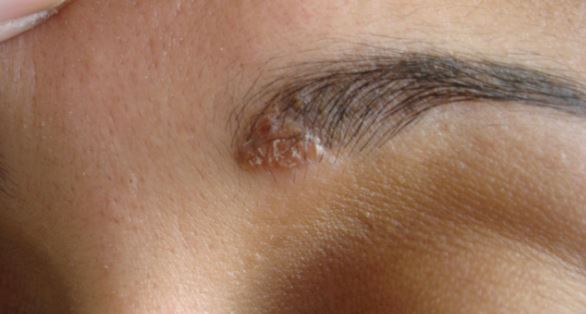
Psoriasis may flare up in response to several triggers. Try to monitor the stress level and watch what you eat as psoriasis might also be triggered because of stress and some foods. Some of the medications may trigger psoriasis and you should speak to the doctor to see if you may substitute them for safer alternatives. Like seborrheic dermatitis, if the psoriasis is much severe, the doctor can treat it using oral or even topical antifungals, oral or topical steroids, , or light therapy.
Treatment for reactions to beauty services
If irritation or the inflammation from the waxing or another beauty service are leading to itchy eyebrows, you can be able to ease the symptoms at home. Be very careful if you’re using any over the counter product or home remedy near the eyes.
Gently use of ice may assist to reduce inflammation and also cool the area. Be sure to wrap the ice in a towel or even in a soft cloth so as to protect the delicate area around the eyes. If you’re looking for a topical home remedy, aloe vera gel is a safer choice for many people.
If you think the itchy eyebrows are as a result of a beauty service that you received, let the salon staff understand. They can be able to tell you if other clients have also had a reaction in the past. If you go for any other appointment, they can be aware of other products that can work better for your skin.
Treatment for lice
The most common way people are able to contract head lice is by direct contact with an infected person. You should avoid in any way sharing the following to prevent contracting or even spreading head lice:
- hats
- brushes
- other personal items that can come in contact with your head
If you do have lice, you’ll be required to treat the condition. You might generally treat lice at home by use of over the counter products that have 1 percent permethrin lotion. You may also use products that has a mixture of pyrethrin and piperonyl butoxide.
The doctor can prescribe lotions as well as the shampoos to treat lice. For instance, your doctor may prescribe a product that has ingredients like benzyl alcohol, or malathion. It’s vital never to combine different lice medications. If you try a product for about three times and it doesn’t work, talk to the doctor. You may be required to try a different medication.
Treatment for shingles
There’s no cure for the shingles. Treatment majorly focuses on reducing the risk of complications and also easing the discomfort. Your doctor will likely prescribe the antiviral medications so as to get the virus under control. A variety of the following treatments are found to treat the pain:
- creams
- numbing agents
- corticosteroids
Cases of shingles normally last between three and six weeks. Most of the people will only have one outbreak of shingles, but it might recur two or even more times. If you’re older than 55, you should get vaccinated against the shingles.
Treatment for other causes
If the cause of the itching isn’t clear, then the doctor will consider the existing conditions. It’s vital to determine the cause of the itching. This will assist to determine the best course of treatment.
Home remedies for itchy eyebrow
Egg Oil
One of the oldest methods used for preventing itchy eyebrow, the Japanese originally developed the egg oil treatments in the early 12th century. By using small portions of traditional egg oil to the affected areas, the egg oil can seep into the pores and thus enrich the mineral content of the skin. This can also increase the amount of natural oils that your skin produces, which will assist to prevent any future eyebrow dandruff.
Vinegar
While rinsing the hair and eyebrows using vinegar might not seem ideal, it’s a perfect way to curb any dandruff problems. Most of the people prefer to apply white vinegar or apple cider vinegar, but the type of vinegar doesn’t matter.
By washing the eyebrows using vinegar, you effectively do away with all the extra skin that will flake off and turn into dandruff. While there are other solutions that might do this, vinegar is mostly preferred as it doesn’t clog the pores when used repeatedly.
Applying Almond Oils
If you have very dry eyelids or a dry forehead, then it’s probably a perfect idea to massage the skin using warm almond oil before you go to bed. This will assist to restore and revitalize the eyebrows and eyelashes that might normally fall off and thus form dandruff.
It’s very important to wash the face thoroughly in the morning immediately you wake up, otherwise there’s a chance the pores will become clogged again. This can lead to other unwelcome skin conditions that might also require treatment.
Aloe Vera Gel
While aloe vera is already associated with relief from the skin conditions like sun burns, not very many people use it to treat the itchy eyebrows problems. Scrubbing aloe vera into the eyebrows fifteen minutes before you bathe can might reduce the overall amount of itchiness in the eyebrows with each use. Eventually the itchy eyebrows can stop altogether, but it’s vital to keep up a regimen of using aloe before you bathe if you want to stay flake-free.
Table Salt
Easy to find and much inexpensive to purchase, table salt may offer the user immediate relief from itchy eyebrows after only a few uses.
Salt is a perfect exfoliant, and rubbing a small amount of salt into the eyebrows each day will assist to get rid of pre-existing dandruff and thus prevent future dandruff production. If you use salt before you shower, water and shampoo may penetrate the open pores and wash out any extra dandruff that can appear later.
Tea Tree Oil
While excess oil can be the reason of itchy eyebrows in some cases, it might also be a solution. Oils can be very important for keeping dandruff under control, and tee tree oil has been applied for many hundreds of years to treat chronic itchiness in patients around the world.
After bathing, take a small spray bottle full of tea tree oil and spray it onto the eyebrows. Let the oil sit for a few minutes, then pat the excess moisture using a clean towel. This will reduce your eyebrow and eyelash dandruff significantly.
Lemons
While lemons have a reputation for being very much acidic, they can assist to get rid of the dandruff and open up the pores so as to prevent dandruff from forming in the future. The acids help break down fungus living in the eyebrows, which might impede the formation of dandruff. If you use a few squirts of lemon to the eyebrows and work the juices into the skin using your fingers, the itchiness should clear up almost immediately.
Neem Leaves
A herb that’s been applied in Indian medicine for several centuries, Neem leaves are a great all-around remedy for dandruff and other skin conditions. The leaves has acids and oils that can break down and get rid of the dead skin cells before they can form into dandruff, which may reduce the amount of the dead skin cells in the eyebrows significantly.
Fenugreek
Commonly used as a spice, Fenugreek can be found in most of the kitchens, and it performs as an excellent exfoliant because of its high amino acid content and also the rough texture. Fenugreek also has a large amount of proteins that assist to enrich the skin, which reduces the likelihood that you’ll develop itchy eyebrows.
Petroleum Jelly
One of the most common methods of treating eyebrow dandruff, a quick application of the petroleum jelly to the affected skin area will assist to moisturize the skin and get rid of germs. Most of the people prefer to leave the petroleum jelly on overnight so the mixture might fully penetrate the skin and get rid of any excess oils.
Eyebrow Dandruff Cures or Cooking Essentials?
While there are several methods of getting rid and preventing the eyebrow dandruff, each method’s effectiveness depends much on each specific user. It’s a better idea to try each method for yourself, and continue with whichever one suits you the best. If one substance doesn’t help alleviate your itchiness problem, don’t be afraid to try another method. While itchy eyebrows is a common problem, it can be solved using a little effort and the right natural remedies.
Further references
- Dermatitis:
- 10 Natural Remedies to Cure Eyebrow Dandruff:
- Thinning Eyebrows? Causes and Remedies:
- What Causes Itchy Eyebrows:
- Symptom of Dandruff in the Eyebrow:
